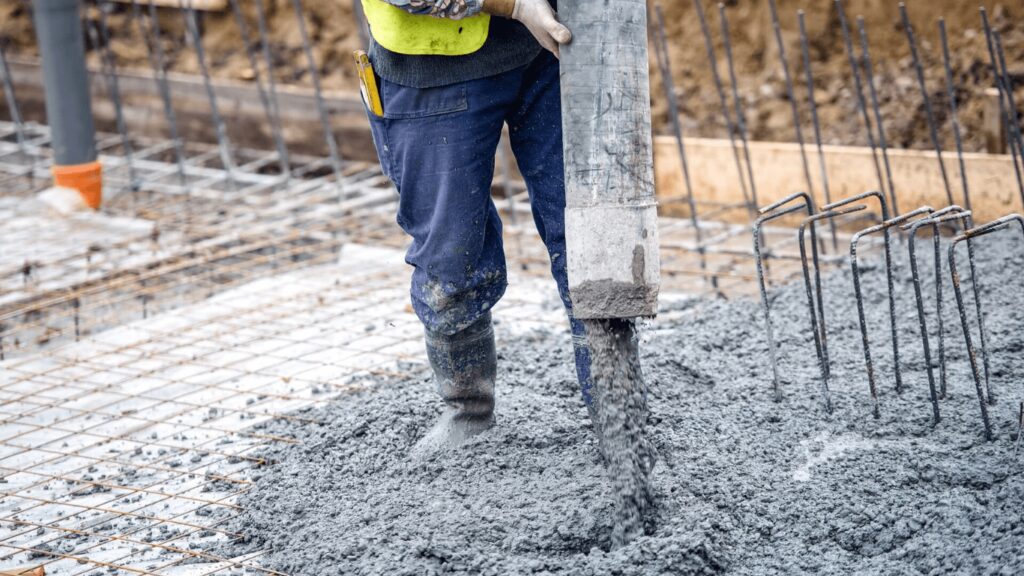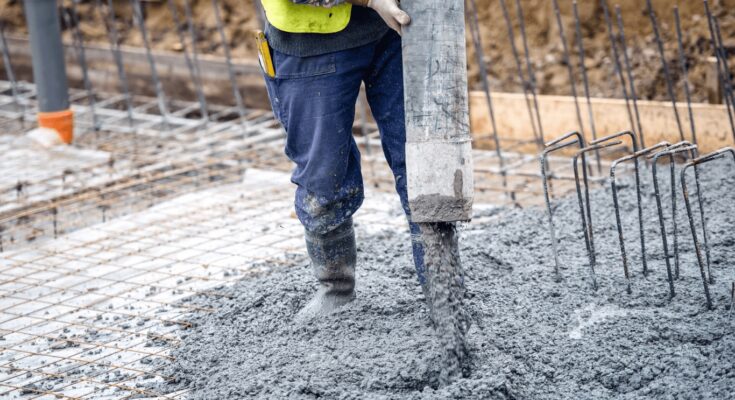8 Compressive strength of concrete enhance tips you need to know. Compressive strength of concrete is one of the most crucial property in RCC structures. It defines its ability to withstand crushing forces.
Concrete, the bedrock of modern construction, owes much of its versatility and longevity to its remarkable compressive strength.

Whether it’s supporting skyscrapers, bridges, or dams, the ability of concrete to withstand crushing forces is paramount to the safety and stability of structures worldwide.
In the context of concrete, compressive strength represents the maximum load per unit area that the material can bear before it fractures.
It is influenced by various factors, including mix design, materials selection, curing methods, and testing procedures.
Optimizing compressive strength is essential for ensuring structural integrity and longevity.
Tips to enhance the compressive strength of concrete
Given below are the 8 proven tips to enhance the compressive strength of concrete
- Optimizing mix design
- Reducing water cement ratio
- Selecting high-quality materials
- Using Supplementary cementitious materials
- Employing proper curing techniques
- Employing advanced Admixtures
- Implementing quality control measures
- Considering high-performance concrete mixes
1. Optimizing mix design
The foundation of strong concrete lies in its mix design. Fine-tuning the proportions of cement, aggregates, water, and admixtures can significantly influence compressive strength.
Aim for a balanced mix that maximizes particle packing, minimizes voids, and ensures adequate hydration of cement particles.
Well-graded aggregates improve particle packing and reduce voids in concrete, resulting in higher compressive strength. Use a combination of coarse and fine aggregates to optimize particle distribution
2. Reducing water cement ratio
Controlling the water-cement ratio is critical for achieving high compressive strength. Excess water leads to increased porosity and weaker bonds between cement particles.
Aim for the lowest water-cement ratio possible without compromising workability to enhance strength and durability.
3. Selecting high-quality materials
The quality of materials, particularly cement and aggregates, directly impacts concrete strength. Choose high-quality cement with superior compressive strength and ensure aggregates are clean, well-graded, and free from deleterious materials.
Investing in premium materials pays dividends in the form of stronger, more durable concrete.
Certain cement types, such as Portland Pozzolana Cement (PPC) or Portland Slag Cement (PSC), offer enhanced strength and durability properties
4. Using Supplementary cementitious materials
Incorporating Supplementary cementitious materials such as fly ash, slag, or silica fume can enhance concrete strength by improving particle packing and reducing cement content.
These materials also contribute to long-term durability and sustainability by mitigating shrinkage and increasing resistance to chemical attack.
5. Employing proper curing techniques
Proper curing is essential for maximizing concrete strength development. Maintain adequate moisture levels and temperature conditions during curing to facilitate hydration and minimize shrinkage.
Consider using curing compounds, wet curing blankets, or membrane curing to ensure uniform hydration and optimal strength gain.
Implementing advanced curing techniques such as steam curing, heat curing, or moist curing accelerates hydration and promotes the formation of strong and durable concrete.
Automated curing systems can provide precise control over curing conditions, ensuring consistent and uniform strength throughout the structure.
6. Employing advanced Admixtures
Utilize advanced admixtures such as superplasticizers, air-entraining agents, and viscosity-modifying agents to tailor concrete properties and enhance compressive strength.
These admixtures can improve workability, reduce water demand, and enhance durability, ultimately leading to stronger concrete.
7. Implementing quality control measures
Implement rigorous quality control measures throughout the concrete production process to ensure consistency and uniformity.
Regular testing of raw materials, fresh concrete properties, and hardened concrete strength is essential for identifying potential issues and optimizing performance.
Compression testing, core testing, and non-destructive testing methods such as ultrasonic pulse velocity testing are commonly used to assess compressive strength
8. Considering high-performance concrete mixes
Explore the use of high-performance concrete mixes tailored to specific project requirements.
HPC mixes typically incorporate advanced materials and technologies to achieve exceptional strength, durability, and workability. Consult with concrete experts to develop customized HPC mixes optimized for compressive strength.
Conclusion
Enhancing the compressive strength of concrete is a multifaceted endeavor that requires careful consideration of mix design, materials selection, curing techniques, and quality control measures.





This article provides invaluable insights into enhancing the compressive strength of concrete. The practical tips and clear explanations make it easy for both professionals and DIY enthusiasts to understand and implement. Thank you for sharing such a comprehensive guide!
Great tips on enhancing the compressive strength of concrete. Very practical and informative!
Your blog on enhancing the compressive strength of concrete is highly informative and practical. The tips provided are clear, actionable, and invaluable for both professionals and DIY enthusiasts. Great job!